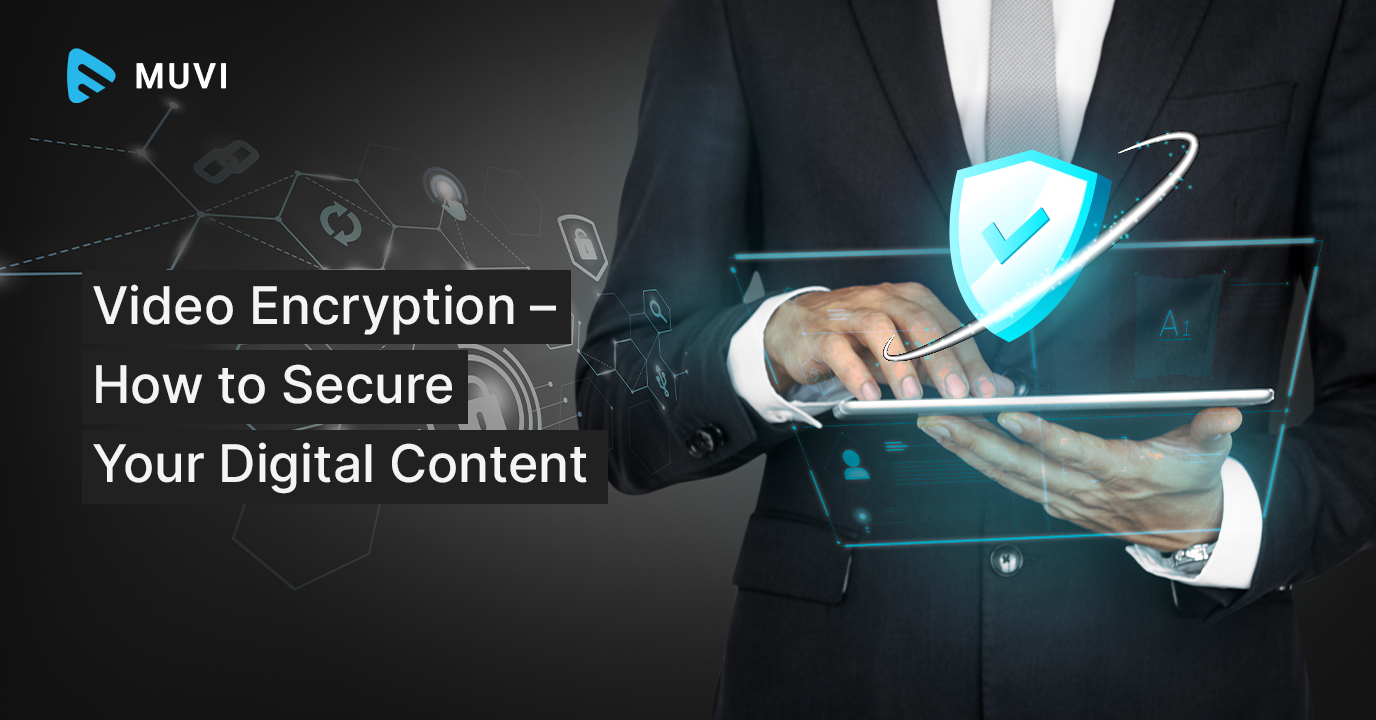The growth of the video streaming market is incredible. It’s expected to reach $102.9 billion by 2023.
However, cybersecurity threats are also rising. Data breaches, unauthorized sharing and data theft are still around. The creation and production of video content requires a lot of time, effort, and investment. And without proper security measures, it may lead to piracy and unauthorized usage, affecting overall revenue and efforts. These are risks for everyone doing business these days.
To be competitive in today’s world, you must rely on content security to keep your company’s information safe and secure. Encrypting your videos is one method of safeguarding your company’s data.
Video Encryption
To prevent unauthorized interceptions and viewing of sent films, video encryption is a process of digitally disguising your videos. You don’t want unauthorized individuals to have access to your sensitive documents or business information when your video content relates to corporate training, demos, business operations, or any E-Learning sessions for that matter. the process of protecting your video from snoopers.
Video encryption converts readable data, formally known as plaintext, to unreadable data, or ciphertext, using algorithms and a special encryption key (usually a number). One needs a special decryption key to transform ciphertext into plaintext in order to obtain access. Businesses are investing a lot of money on the newest technologies in enterprise video security as well as protection for video streaming services during incoming and outgoing streams. With time, video encryption has become more sophisticated, and today, many businesses and the government are choosing AES, the encryption standard that replaced Data Encryption Standard (DES), to safeguard sensitive information.
Advanced Encryption Standard
AES encryption is a symmetric block cipher that was chosen to safeguard sensitive data and is used in software and hardware all around the world. AES encryption has grown in importance as a means for businesses and content producers to protect their content when transferring video in the streaming sector. As an encryption standard, it encodes data in a way that renders it incomprehensible to anyone lacking the required digital key.
Three various lengths of cryptographs, referred to as “secret keys,” serve as the foundation for the mechanism of encrypted video streaming under the AES approach. AES creates a ciphertext by randomly generating the key and some plaintext, or readable data. The unique key is required to decrypt the ciphertext into usable form. There are three different bit lengths for secret keys: 128 bit, 192 bit, and 256 bit. Without the special key required to encrypt and decrypt the data, the assets are worthless to hackers.
DRM was at the top of the list, assuring improved content protection, especially for the Digital streaming platforms, ahead of other alternatives like tokenization, encrypted streaming, and the unauthorized distribution of digital video material. Let’s define DRM to further deepen your understanding of encryption and content protection. People frequently mix up DRM and encryption, but there is a difference between the two. DRM, which includes encryption, is a comprehensive idea for managing and securing the rights to your digital property. The initial stage in a DRM deployment is encryption, but it’s not the only one.
DRM
When you consider DRM in the context of video viewing, it refers to a variety of things; it mostly refers to the encryption and device protocols upheld by video platforms to safeguard their video content from piracy and misuse.
The DRM workflow begins with the content being packed for delivery and encrypted. When a user presses the play button for a video, the player makes a request to the license server for the key to access the material. Before returning with a decryption key, the server checks to see if the video players and other devices are permitted. When the authentication procedure is finished, the player can unlock the video and begin putting it on for the viewers. It occurs fairly immediately.
Take your Protection to next level with Muvi
Any company that values the potential of video must invest in enterprise-grade security. Any organization’s growth and scaling strategy must include video. The best option is to use an end-to-end video streaming solution that guarantees seamless transmission of encrypted content across networks, devices, and locations.
A characteristic that every video streaming platform must have is the ability to protect premium video material in a world where threats and cyberattacks are continually growing. Before settling on a online video service provider, make an informed choice regarding your security needs. Fortunately, you have access to all the powerful capabilities for safeguarding your premium content when you choose a professional-grade secure video streaming platform like Muvi.
Ready to give Muvi’s secure online video platform a try? Take a 14-day Free Trial, now!

